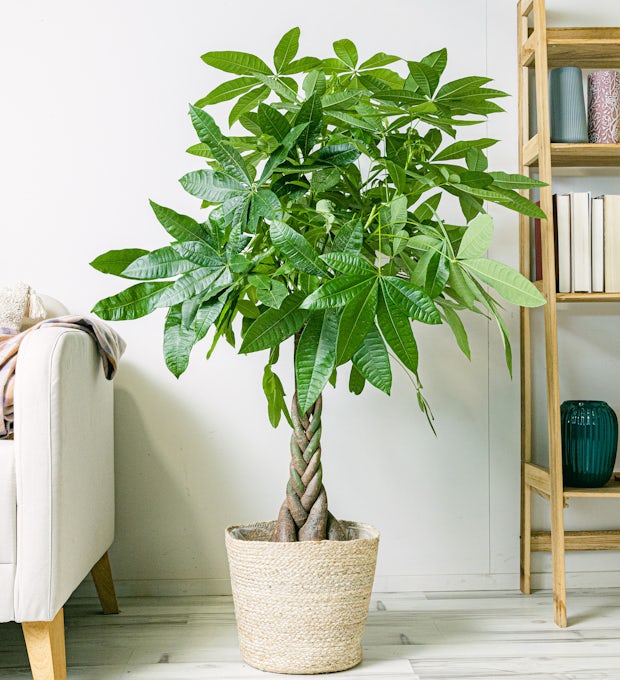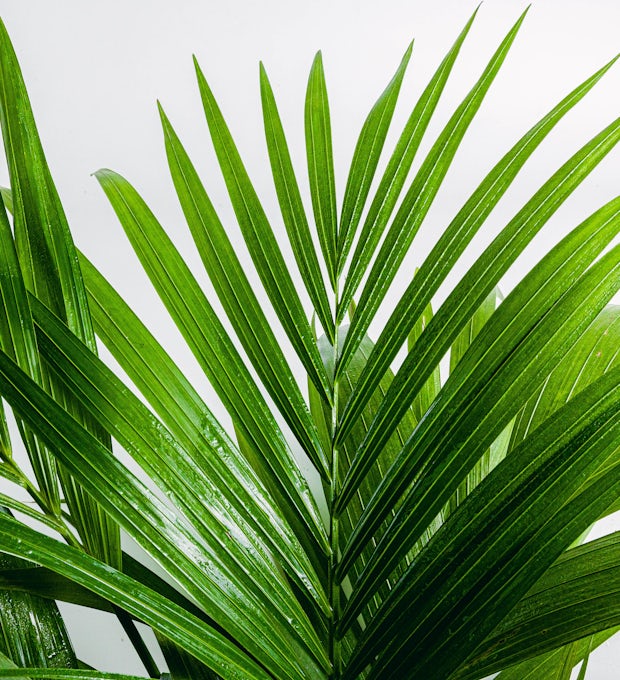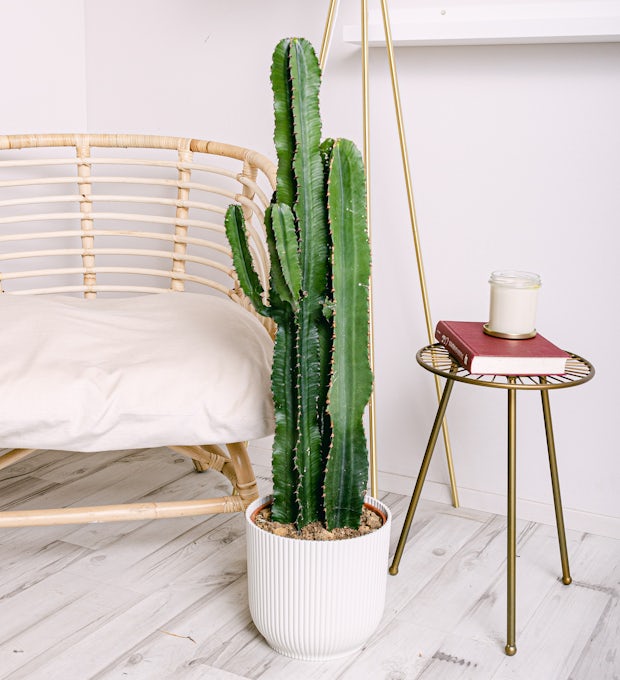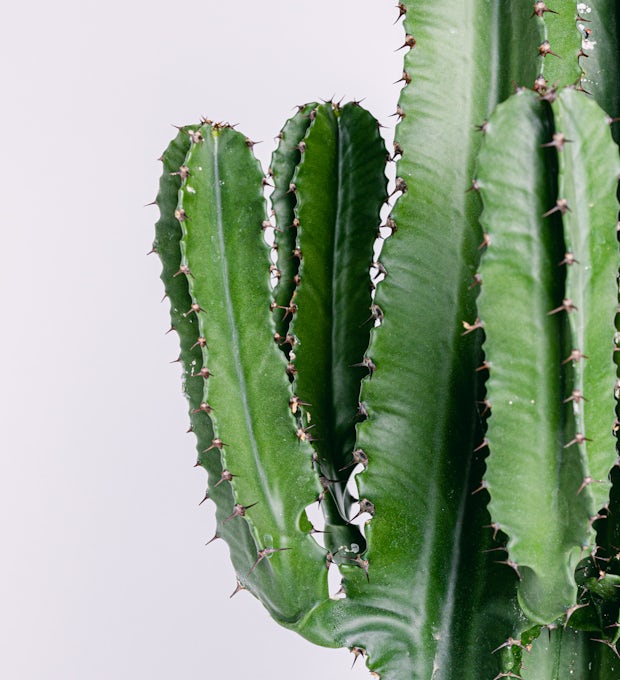Growing fruit trees indoors may seem like a complicated task, but it is possible and has many benefits. In this article, we'll explore how to select and care for fruit trees indoors, from choosing the right tree for your space to the essential care they need to grow healthily. We will talk about the ideal containers for growing fruit trees indoors, the soil and nutrients necessary for their growth, as well as the necessary irrigation and light care. We'll also address pest and disease control, and finally, harvesting and enjoying your own fruits. If you're interested in having your own fruit trees at home, read on!
Benefits of Growing Fruit Trees Indoors
Growing fruit trees indoors has numerous benefits that are worth highlighting. First of all, this practice allows us to enjoy fresh and healthy fruits all year round, without depending on the season or the weather conditions outside. In addition, by having fruit trees indoors, we can better control their environment, allowing us to ensure optimal growth and prevent common diseases or pests outdoors. Another advantage is the ability to grow a wider variety of fruits, as some fruit trees are not well suited to certain climates or soils. Likewise, growing fruit trees indoors can be a relaxing and rewarding activity, connecting us with nature and helping us reduce stress. Additionally, having fruit trees indoors can also improve air quality, as they absorb carbon dioxide and release oxygen. In summary, growing fruit trees indoors provides us with a number of benefits, such as the availability of fresh fruits all year round, greater control over growing conditions, the possibility of growing a greater variety of fruits, and the improvement of the indoor environment.
Choosing the Right Fruit Tree for Your Space
Choosing the right fruit tree for your space is a crucial step in growing fruit trees indoors. The first thing you need to consider is the size of the tree. Some varieties can grow up to 3 meters tall, while others are smaller and more compact. You should also consider the amount of sunlight your space receives, as some fruit trees require more light than others. For example, citrus fruits need at least 6 hours of direct sunlight a day, while figs can tolerate less direct sunlight. Another important consideration is the temperature of your space. Some fruit trees need warmer temperatures to grow, while others can tolerate cooler temperatures. In addition, you should think about the type of fruit you want to grow and whether it is suitable for the conditions of your space. For example, apples and pears are fruits that require a certain number of chill hours to produce well, so if you live in a warm climate, it can be difficult to grow these varieties indoors. In short, choosing the right fruit tree for your space requires a careful assessment of environmental conditions and your personal preferences for fruit types.
We ship plants to all locations, you can see more options here.
Best Containers for Growing Fruit Trees Indoors
Best Containers for Growing Fruit Trees Indoors
When growing fruit trees indoors, it is essential to choose the right containers to ensure optimal plant growth and development. There are different container options to suit the needs of each fruit tree and allow it to be grown indoors.
First of all, it is important to consider the size of the fruit tree and its root system when selecting the container. For smaller species, such as dwarf citrus or fruit shrubs, medium-sized pots can be used. These pots should have good drainage to prevent water from pooling and allow the roots to breathe properly.
For larger fruit trees, such as mangoes or fig trees, it is recommended to use large pots or even planters. These containers should be deep and wide enough to allow for good development of the root system and provide space for the plant to grow healthily.
In addition to size, it is important to choose containers made of durable and sturdy materials. Terracotta or ceramic pots are a popular choice because of their ability to retain moisture and regulate soil temperature. However, plastic or fiberglass pots can also be used, which are lighter and easier to handle.
In summary, when selecting containers for indoor fruit tree cultivation, it is necessary to consider the size of the fruit tree and its root system, as well as choose durable and resistant materials. With the right containers, you can enjoy growing fruit trees indoors and get delicious homemade fruits.
We ship plants to all locations, you can see more options here.
The Soil and Nutrients Needed for the Growth of Fruit Trees
Soil and nutrients are essential for the growth and development of indoor fruit trees. When growing fruit trees in pots or containers, it is important to ensure that the soil is rich in nutrients and has good drainage. Fruit trees require an adequate amount of nitrogen, phosphorus, and potassium to grow healthy and strong. Organic fertilizers, such as compost or manure, are an excellent option for providing the necessary nutrients to the fruit tree's roots. Additionally, it is important to check the acidity of the soil using a pH meter to ensure that it is within the proper range for the type of fruit tree being grown. If the soil is too acidic or alkaline, nutrients will not be available to the fruit tree's roots and this can negatively affect its growth and fruit production. It's also important to keep the soil moist but not soggy, as too much water can cause root rot. In summary, to ensure healthy and productive growth of fruit trees indoors, it is critical to provide nutrient-rich soil with good drainage and regularly check the acidity of the soil.
Watering and Light: Essential Care for Growing Fruit Trees Indoors
Watering and Light: Essential Care for Growing Fruit Trees Indoors
Proper watering and the amount of light are two fundamental aspects for success in growing fruit trees indoors. First, it's important to establish a regular watering schedule to ensure that plants receive the right amount of water. The frequency and amount of watering will depend on the type of fruit tree and the size of the container it is in. It is necessary to keep the soil moist but not soggy, thus avoiding problems such as root rot.
On the other hand, light also plays a crucial role in the growth and development of fruit trees indoors. These plants need to receive direct sunlight for at least 6 hours a day to carry out photosynthesis optimally. If there is not enough natural light, special lamps can be used to provide the necessary lighting. It's important to place trees near windows or use reflective mirrors to maximize the amount of light they receive.
In addition, it is advisable to periodically rotate fruit trees so that all parts receive equal exposure to light. This will prevent the branches from leaning to one side only in search of light, which could negatively affect their structure.
In summary, proper watering and sufficient amount of light are two essential factors for the successful cultivation of fruit trees in enclosed spaces. By maintaining a regular watering schedule and providing the right amount of light, healthy growth will be encouraged and the chances of a good harvest of tasty and nutritious fruits will be increased.
Pest and Disease Control in Indoor Fruit Trees
Controlling pests and diseases in indoor fruit trees is essential to ensure their healthy growth and fruit production. When growing fruit trees indoors, it's important to be on the lookout for potential insect infestations and diseases that can affect their development. An effective way to prevent and control these pests is to maintain good hygiene in the tree's environment, regularly removing fallen leaves, fruit debris, or any other organic material that can become a source of disease. In addition, it is advisable to periodically check the leaves, branches, and trunk for signs of damage or the presence of insects. If any pest or disease is detected, immediate action should be taken to control its spread. There are organic and chemical products available on the market that can be used to combat these problems, but it is important to follow the manufacturer's instructions and be careful not to damage the tree or fruits. It is also advisable to consult a gardening or agriculture specialist for personalized advice on how to manage specific pests and diseases that may affect fruit trees indoors. With proper pest and disease control, indoor fruit trees will be able to grow healthy and produce delicious fruit to enjoy at home.
Harvest and enjoy your own fruits
Harvest and enjoy your own fruits
One of the greatest satisfactions of growing fruit trees indoors is being able to enjoy harvesting your own fruits. Once the tree has grown large enough and is producing ripe fruit, it's time for picking. It is important to wait until the fruits are at their optimum point of ripeness before harvesting, as this will ensure their proper flavor and texture.
To harvest the fruits, use clean, sharp scissors or knives. Cut the fruits carefully, making sure not to damage nearby branches or shoots. Some fruit trees may require a bit of practice to determine when they're ready to be harvested, so it's advisable to do your research on the specific characteristics of each species.
Once you've harvested the fruits, you can enjoy them fresh or use them in delicious recipes. If you have a bountiful harvest, consider sharing some with family, friends, or neighbors. In addition, you can experiment with different preservation methods such as dehydration, freezing or the preparation of jams and preserves.
Remember that growing fruit trees indoors requires patience and dedication, but it also offers great rewards. Enjoying your own home-grown fruits not only gives you healthy and tasty food, but it also connects you to nature and allows you to appreciate the process of plant growth and development. So don't hesitate to embark on this exciting adventure and start reaping and enjoying your own rewards.
In this article we have discovered the possibility of growing fruit trees indoors, which can be a great alternative for those who do not have a garden or outdoor space. We've talked about the benefits of having your own fruit trees at home, how to choose the right tree, and the best containers for growing them. In addition, we have also addressed the topic of soil, necessary nutrients, irrigation and light for tree growth, as well as pest and disease control. Finally, we've talked about harvesting and enjoying your own fruits. It's important to remember that growing fruit trees indoors takes time, dedication, and constant care, but it can also be a very rewarding experience. Do you dare to give it a try? What other plants or fruits could you grow indoors? Nature always surprises us with its infinite possibilities







